
Universidade Fernando Pessoa
Porto, Portugal

Seismic-Sequential Stratigraphy
A toplap is a termination of strata, or seismic marker, against an overlying surface mainly resulting of non-deposition (sedimentary bypassing) with perhaps only minor erosion. Each unit of strata laps out in a landward direction at the top of the unit, and each successive termination lies progressively seaward.
Three different kinds of toplap can be considered:
a) Coastal toplap
b) Marine toplap
c) Non-marine toplap
a) Coastal toplap
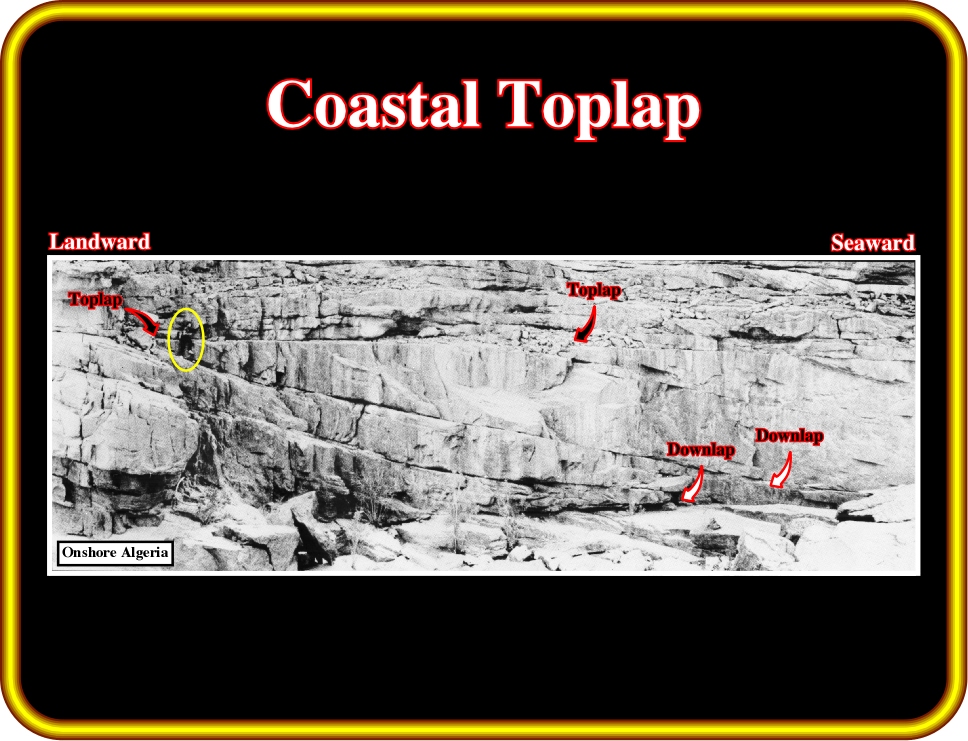
Plate 186 - First of all notice the scale of this photograph. Geology is scale dependent. The scale is given by the geologist near the toplap termination (yellow ellipse). Toplap strata termination are here well illustrated. The strata laps out in the landward direction, but the successive termination lie progressively seaward. The downdip strata terminations are downlaps, and specially distal downlaps.
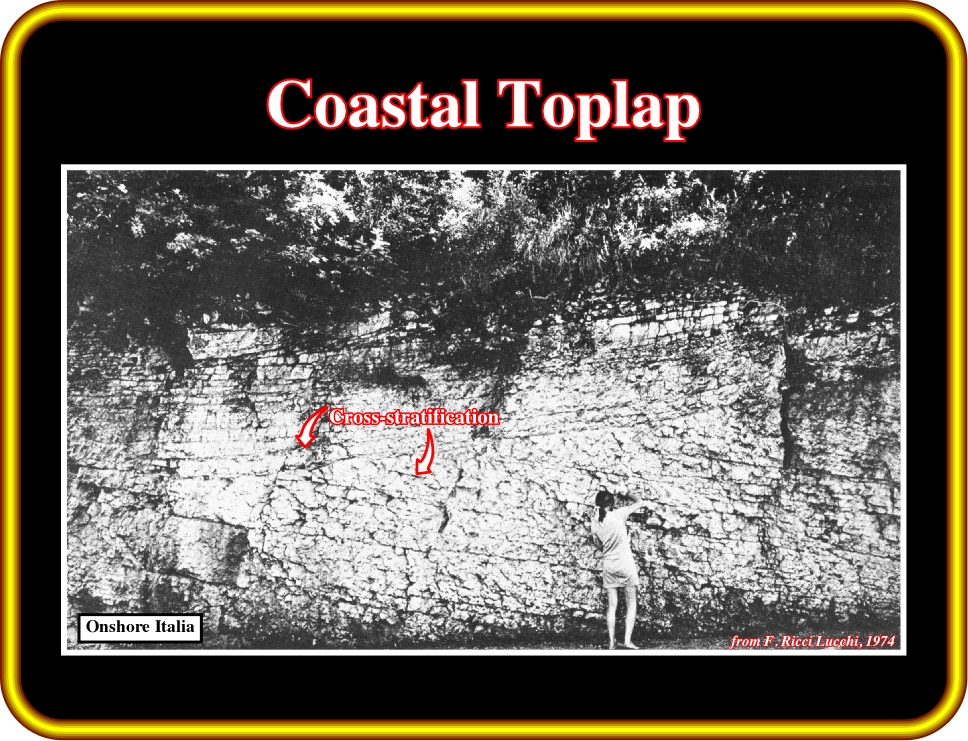
Plate 187 - Toplap should not be confused with cross-stratification. As illustrated here, cross-bedding occurs at a very small scale. Cross-strata thickness is measured in centimeters. Genetically, cross-bedding is produced by migration of bed forms, particularly ripples (which form small-scale cross-lamination) and dunes (which form medium- to large-sale cross-lamination or cross-bedding).
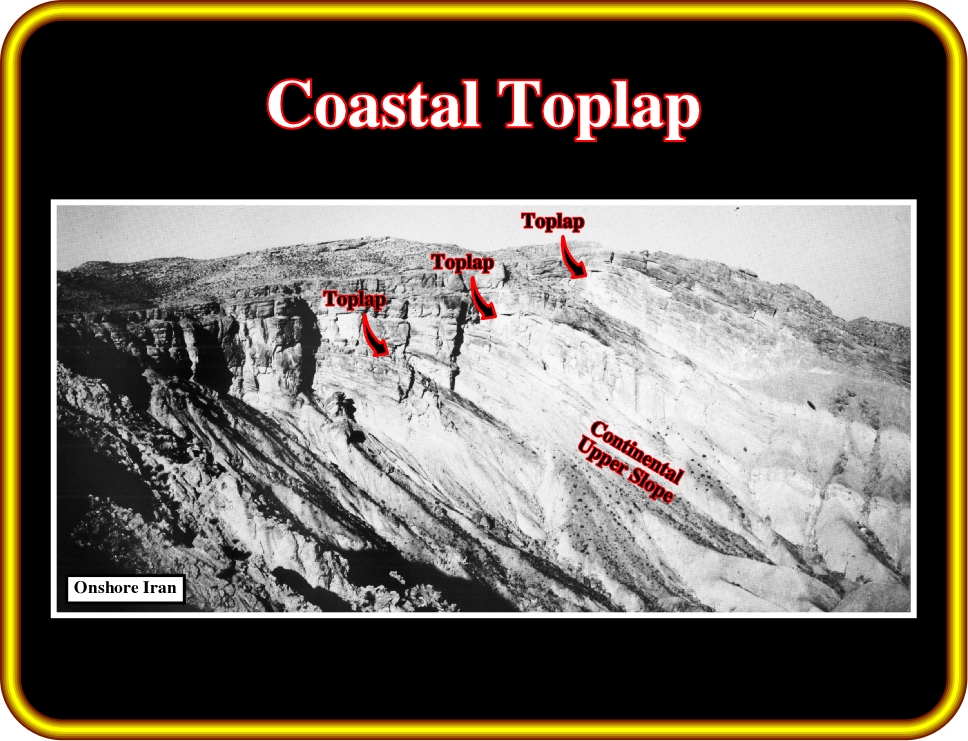
Plate 188 - Toplap is often associated with shelf breaks as illustrated in this outcropping. In this particular example, some strata laps out in the landward direction but far away from the shelf break. Toplap strata terminations implies an absence of erosion,i.e., the geometry is mainly induced by non-depositional processes. As we will see later, when erosion is associated with the upper limit of stratigraphic cycles we will use the term truncation (erosional toplap for certain geologists).
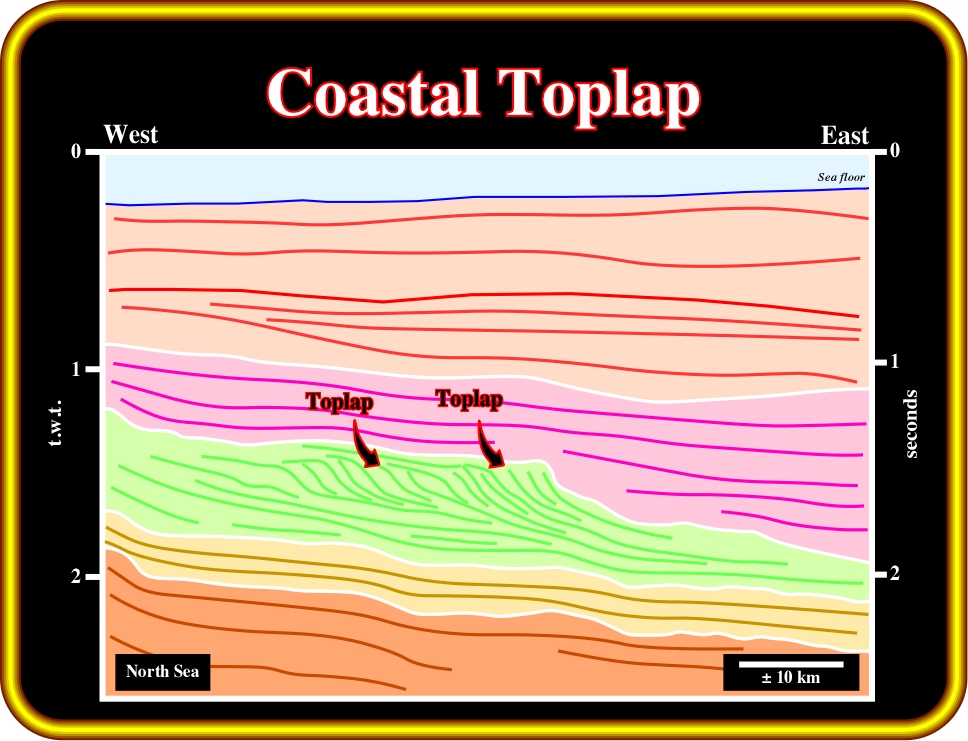
Plate 189 - Theoretically, toplap implies non-deposition, i.e., sedimentation with minor erosion. However, on seismic lines, and particular on regional lines such as the one illustrated above, it is often difficult to recognize the magnitude of erosion to differentiate toplap from erosional truncation. As a guess, we hypothesize that on this line, the toplaps are associated with coastal deposits and so they should be considered as coastal toplaps.
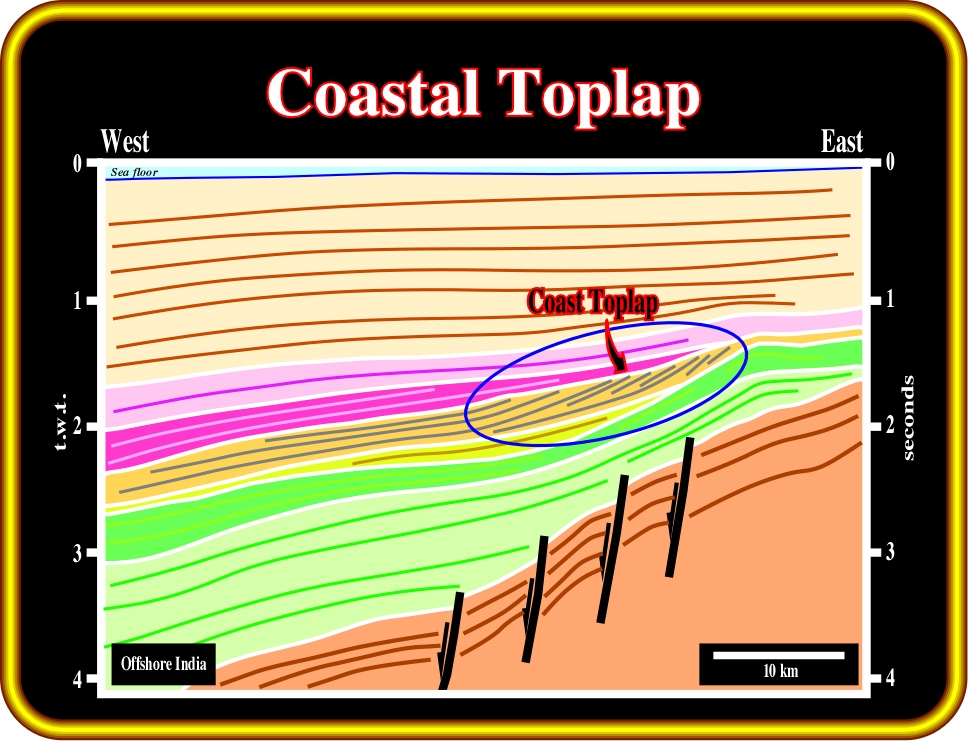
Plate 190 - On this line, the depositional inclined reflectors, probably associated with carbonate sediments, terminate updip by toplap geometrical relationships. Taking into account that they occur in a likely shallow water environment, they can easily be considered as coastal toplaps. On the other hand, they are clearly associated with an upper boundary of a stratigraphic cycle. Actually, as we will see later, one can say they occur along the upper sequence boundary (a sequence is a stratigraphic cycle induced by a 3rd order eustatic cycle).
a) Marine toplap
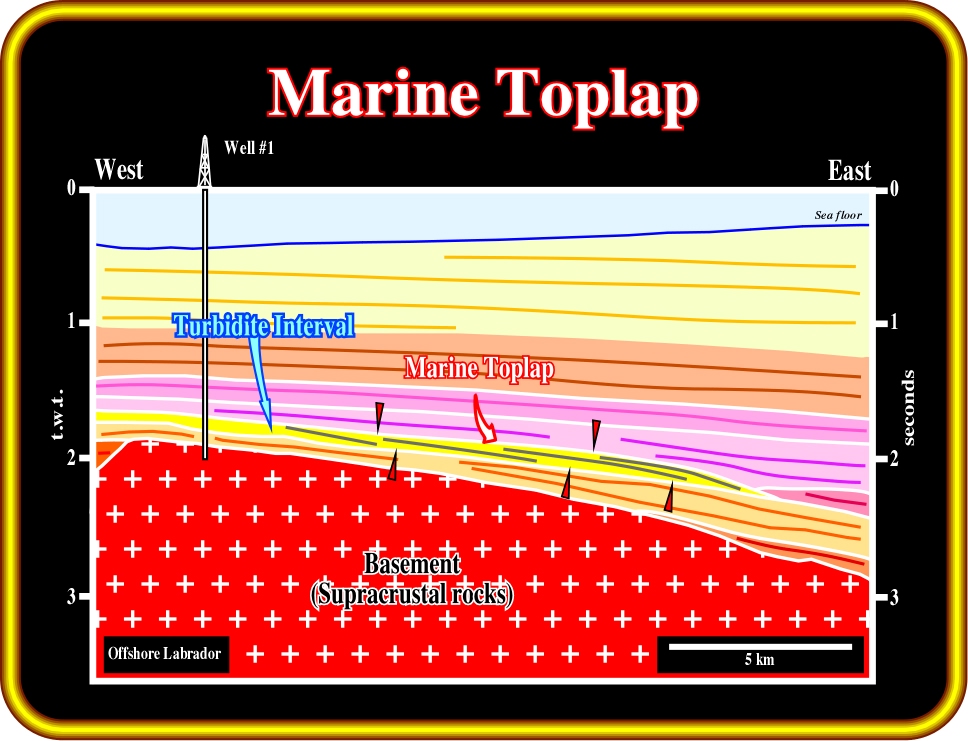
Plate 191 - Marine toplaps are here associated with a turbidite interval, which was corroborated by the results of well drilled by Total in the 70's. It is relatively easy easy to recognize the internal geometry of the turbidite interval, and so, toplap terminations are inferred to be the result of lateral stacking of turbidite depositional lobes, which induces a progradational geometry.
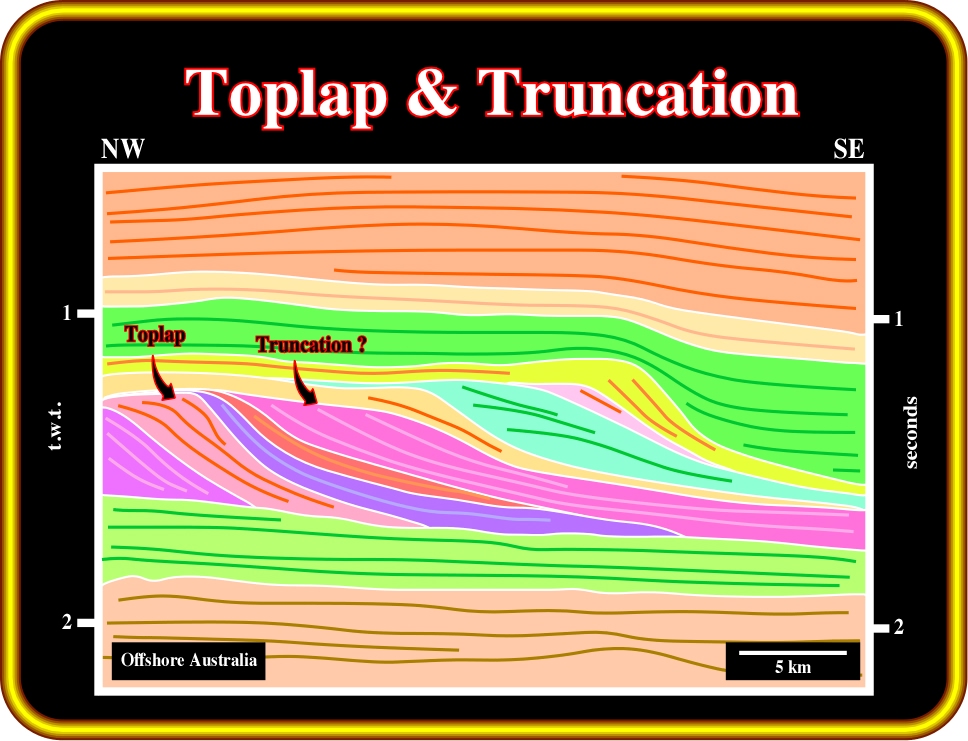
Plate 192 - On this seismic line, toplap and truncation seem to be side by side. As said previously, the differentiation between them is often so difficult that certain geologists use the term toplap to express all updip reflection terminations. However, when erosion is evident, they speak of toplap by erosion. Similarly, toplap by non-deposition is used when sedimentary bypassing is paramount.
Truncation is a termination of strata or seismic reflections interpreted as strata along an unconformity surface due to post-depositional or structural effects. Truncation occurs along the upper limit of stratigraphic cycles (sequences). Erosional truncation implies the deposition of strata and their subsequent removal along an unconformity surface.
Structural truncation is quite different from erosional truncation. Indeed a structural truncation is a lateral termination of a stratum by structural disruption, produced by faulting, gravity sliding, salt flowage, or igneous intrusion.
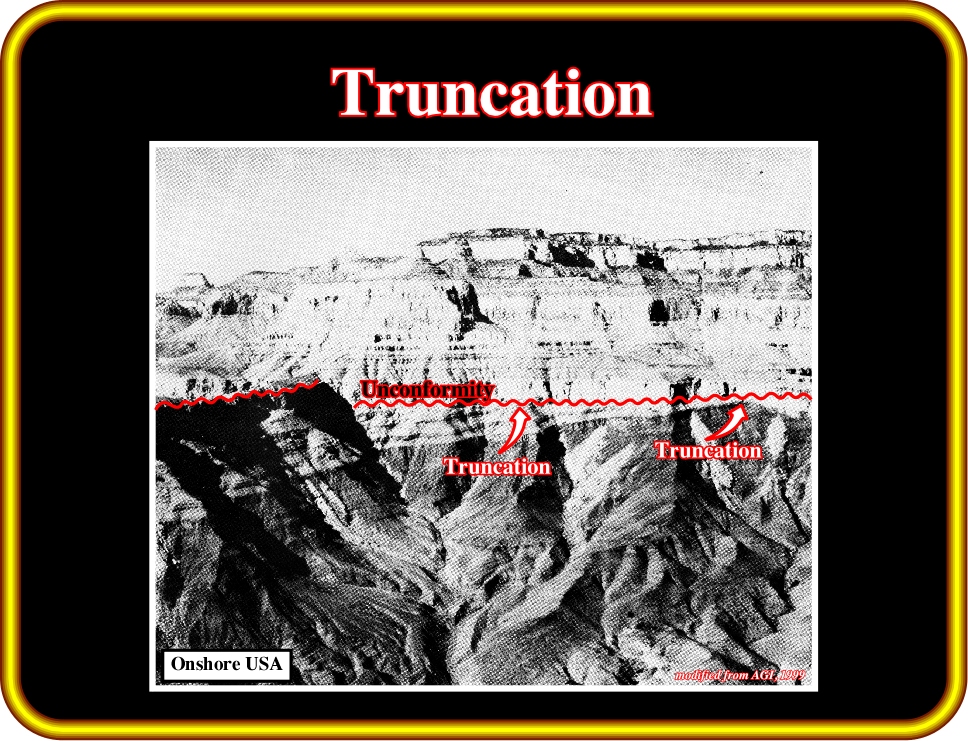
Plate 193 - Truncation of sediments, underlying an erosional surface (unconformity) is evident on this photograph taken of the Colorado Canyon. Subsequently, and according the terminology followed in these notes, the stratal termination do not correspond to toplaps, but truncation

Plate 194 - Truncational reflection terminations are easily recognized on this seismic line from offshore China. As pictured, the erosional surfaces, i.e., the unconformities cannot be picked in continuity. The associated interfaces change laterally quite a lot. Interpreters will be obliged to jump from a peak to a trough or trough to peak depending on the impedance contrasts.
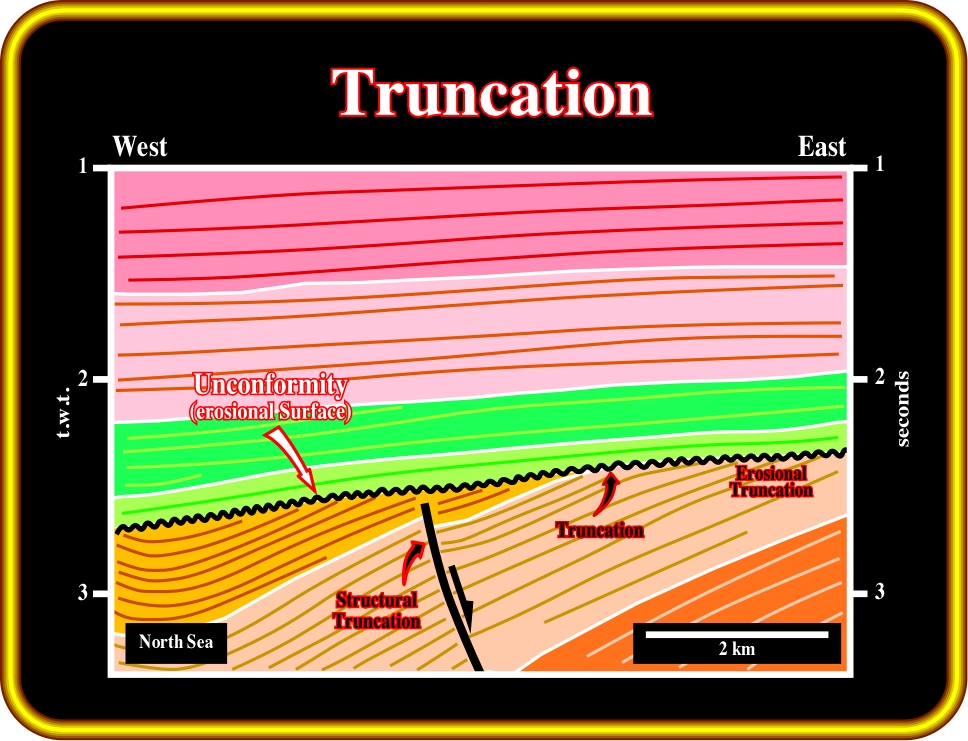
Plate 195 - On this seismic line from the North Sea, truncational reflection terminations are associated with the erosional surface between a Mesozoic Cretaceous rift-type basin and the Cenozoic cratonic sediments. In the rift-type sediments, in association with a normal fault, another type of truncation can be observed (structural truncation). On this subject, the next seismic line (Plate 196) is more significant.

Plate 196 - This seismic line comes from onshore Venezuela, eastward of Maracaibo lake. The regional structural context of the area is compressional. Several compressional tectonic regimes took place, particularly during the Cenozoic. As pictured here, the sediments were shortened and uplifted as tectonic inversions took place. An Upper Miocene unconformity truncated pre-Miocene sediments creating sharp truncation reflection terminations. Later, in Mio-Pliocene, another tectonic regime took place folding and faulting the sediments. So, in certain areas, where folding was not enough to accommodate the sediments, reverse faults developed to shorten the sediments as a consequence of volume problems. The sediments were broken and displaced along the reverse fault planes creating structural truncation terminations at the reflectors ending against the fault planes.